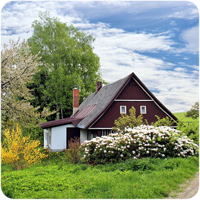Het arrangement 10.4 Home swapping - tto123 is gemaakt met Wikiwijs van Kennisnet. Wikiwijs is hét onderwijsplatform waar je leermiddelen zoekt, maakt en deelt.
- Auteur
- Laatst gewijzigd
- 11-05-2025 18:10:15
- Licentie
-
Dit lesmateriaal is gepubliceerd onder de Creative Commons Naamsvermelding-GelijkDelen 4.0 Internationale licentie. Dit houdt in dat je onder de voorwaarde van naamsvermelding en publicatie onder dezelfde licentie vrij bent om:
- het werk te delen - te kopiëren, te verspreiden en door te geven via elk medium of bestandsformaat
- het werk te bewerken - te remixen, te veranderen en afgeleide werken te maken
- voor alle doeleinden, inclusief commerciële doeleinden.
Meer informatie over de CC Naamsvermelding-GelijkDelen 4.0 Internationale licentie.
Aanvullende informatie over dit lesmateriaal
Van dit lesmateriaal is de volgende aanvullende informatie beschikbaar:
- Toelichting
- Deze les valt onder de arrangeerbare leerlijn van de Stercollectie voor Engels voor tweetalig onderwijs, leerjaar 1, 2 en 3. Dit is thema 10 'At home'. Het onderwerp van deze les is: Home swapping. In deze les wordt het onderwerp huizenruil besproken. Daarnaast wordt er een grammaticatoets gegeven waarin de onderdelen Present continuous, Past continuous en Betrekkelijk voornaamwoord worden getoetst.
- Leerniveau
- VWO 2; HAVO 1; VWO 1; HAVO 3; VWO 3; HAVO 2;
- Leerinhoud en doelen
- Engels;
- Eindgebruiker
- leerling/student
- Moeilijkheidsgraad
- gemiddeld
- Studiebelasting
- 1 uur 40 minuten
- Trefwoorden
- arrangeerbaar, engels, grammaticatoets, home swapping, huizenruil, stercollectie, tto123
Gebruikte Wikiwijs Arrangementen
VO-content Engels. (2020).
1.2 Preferences - tto123
VO-content Engels. (2023).
10.4 Home swapping - hv12

 The subject of this period is: home swapping.
The subject of this period is: home swapping.

 Home swapping
Home swapping Home exchange
Home exchange Study the vocabulary. (10 minutes)
Study the vocabulary. (10 minutes)
 You are going to take a grammar test.
You are going to take a grammar test.

 Home swap
Home swap You have found a wonderful house you'd like to swap with during the summer.
You have found a wonderful house you'd like to swap with during the summer. What have you learnt in this period?
What have you learnt in this period?
